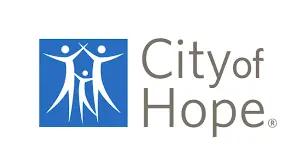
AI Mortality Model Predicts End of Life, Boosts Palliative Care

Finly Zachariah, MD, discusses the rationale behind implementing an AI mortality model at City of Hope, Duarte, California, which enhances the opportunity for patient-clinician discussions on end-of-life preferences, thereby boosting palliative care.
A machine learning-based 90-day mortality model is implemented at City of Hope in Duarte, California, to pinpoint cancer patients at elevated risk of near-term mortality. Utilizing this model facilitates discussions between healthcare providers and patients about end-of-life preferences and enables the implementation of personalized care plans.
Finly Zachariah, MD, is an accomplished figure in palliative medicine and serves as an associate clinical professor in the Department of Supportive Care Medicine at City of Hope. He also co-founded Empower Hope and serves as its chief medical officer and is the also co-first author of the 90-day mortality paper along with Lorenzo A. Rossi, PhD, “Prospective Comparison of Medical Oncologists and a Machine Learning Model to Predict 3-month Mortality in Patients with Metastatic Solid Tumors.”
Transcription:
0:10 | There is evidence that shows that when clinicians have an even better relationship with patients, they sometimes will overestimate the time that they think somebody has.
0:20 | The other reason is that when clinicians are so focused on the next therapy, cure, or potentially an opportunity to prolong disease, they sometimes get so focused on that, and can sometimes miss the opportunity to say, “we’re on a one-track approach, and we should pause and take a look at some of those quality-of-life indicators.”
0:48 | That is from the clinical side. From the patient side, a lot of patients will say, “I absolutely want to pursue advanced therapies, etc. But at the same time, if time is short, I want to be with my family. Doc, I love you but at the same time, I am not interested in being in an ICU, with all the machines, etc. This can cause a lot of discomfort and PTSD for families, etc.
1:10 | We need to do better in healthcare about how we balance both offering the best of medicine and science, while at the same time being able to say, “if time is short, we want to make sure that we allow you to have sufficient time with your family, and make sure that any of the components that we offer are value based even at that time as well.” The best way for clinicians to align with those preferences is to make sure that you have person centered conversations around goals of care.
1:40 | Clinicians cannot have conversations with everyone, they are already incredibly busy. So how do you have those more substantive conversations, especially when time is short? The model was designed to then help clinicians identify who might be the best candidates to have those goals of care conversations with and make sure that clinicians are thinking about that critical moment that allows the patients to have sufficient lead time. [With the model] we minimize [the scenario of only having the] poor quality indicators that come in the last 2 weeks of life, which do not allow the opportunity [for patients] to even go on hospice. Sometimes it is incredibly short with cancer.









































